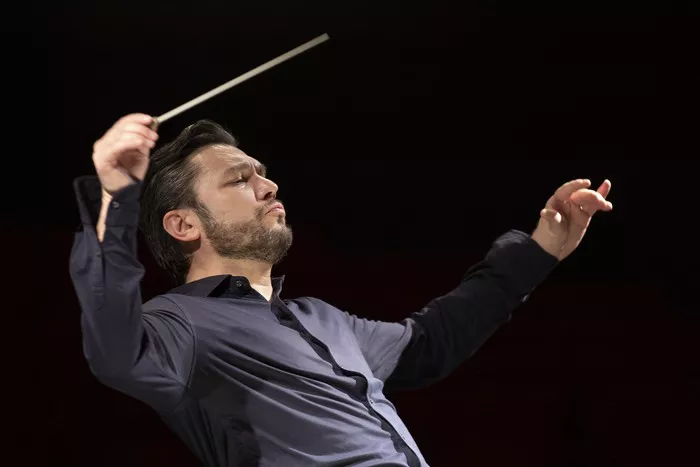Classical music is a timeless and diverse genre that has captivated audiences for centuries. Its rich history has given rise to a multitude of styles and forms, making it one of the most multifaceted genres in the world of music. In this article, we will delve into the four main types of classical music, each with its unique characteristics and historical significance.
1. Baroque: The Ornate Beginnings of Classical Music
The Baroque era, spanning from the late 16th to the early 18th century, marks the inception of classical music as we know it today. This period was characterized by its ornate and intricate compositions, often featuring elaborate ornamentation and virtuosic performances. Baroque composers, such as Johann Sebastian Bach, George Frideric Handel, and Antonio Vivaldi, laid the foundation for classical music by creating works that continue to be celebrated for their complexity and emotional depth.
Baroque music is notable for its use of contrapuntal techniques, where multiple melodic lines intertwine to create harmonically rich textures. Pieces like Bach’s “Brandenburg Concertos” showcase the brilliance of Baroque composition with their intricate counterpoint and dazzling instrumentation. The harpsichord, a precursor to the modern piano, was a prominent instrument during this era, contributing to the distinct sound of Baroque music.
2. Classical: The Age of Balance and Symmetry
The Classical period, which followed the Baroque era and spanned from the mid-18th to the early 19th century, brought a shift in musical aesthetics. Composers of this period, including Wolfgang Amadeus Mozart, Ludwig van Beethoven, and Joseph Haydn, embraced a more balanced and structured approach to composition. This period is often characterized by its emphasis on clarity, form, and symmetry.
Classical music is renowned for its use of sonata-allegro form, a structure that consists of distinct sections such as exposition, development, and recapitulation. This form allowed composers to explore thematic material in a systematic and organized manner. Works like Beethoven’s Symphony No. 5 and Mozart’s Piano Concerto No. 21 exemplify the mastery of this form, showcasing the elegance and precision of Classical composition.
Instruments like the piano and the classical orchestra, featuring strings, woodwinds, brass, and percussion, became central to Classical music. These instruments allowed composers to experiment with dynamic contrasts and orchestration, further enhancing the expressive capabilities of the genre.
3. Romantic: The Emotion and Expression of Classical Music
The Romantic era, spanning from the late 18th to the early 20th century, brought a profound shift in the emotional and expressive qualities of classical music. Composers like Ludwig van Beethoven, Franz Schubert, and Pyotr Ilyich Tchaikovsky pushed the boundaries of classical composition, emphasizing individual expression and the exploration of profound human emotions.
One of the defining features of Romantic music is its intense emotional depth. Composers often sought to evoke powerful feelings through their compositions, resulting in works that are both passionate and introspective. Beethoven’s Ninth Symphony, with its triumphant choral finale, and Tchaikovsky’s “Swan Lake,” with its hauntingly beautiful melodies, are prime examples of Romantic compositions that resonate deeply with audiences.
During the Romantic era, there was a growing interest in programmatic music, where composers sought to tell stories or evoke specific imagery through their compositions. Hector Berlioz’s “Symphonie fantastique” is a notable example of a programmatic work that vividly portrays a narrative through music, taking listeners on a journey through the composer’s imagination.
4. 20th Century and Beyond: The Evolution of Classical Music
The 20th century marked a period of significant experimentation and innovation in classical music. Composers like Igor Stravinsky, Claude Debussy, and Arnold Schoenberg pushed the boundaries of tonality, harmony, and structure, giving rise to diverse and avant-garde styles.
One of the defining characteristics of 20th-century classical music is its departure from traditional tonal systems. Composers embraced dissonance, atonality, and unconventional scales to create music that challenged established norms. Stravinsky’s “The Rite of Spring” is a groundbreaking work that is known for its dissonant and rhythmic complexity, which caused a scandalous riot at its premiere.
Electronic music and musique concrète also emerged in the 20th century, allowing composers to incorporate electronic sounds and recordings into their compositions. Pioneers like Karlheinz Stockhausen and Pierre Schaeffer paved the way for the integration of technology into classical music, giving birth to a new realm of sonic possibilities.
In the latter half of the 20th century and into the 21st century, classical music continued to evolve with the emergence of minimalism, post-minimalism, and neoclassicism. Composers like Philip Glass, John Adams, and John Williams brought a renewed interest in melody and tonality while maintaining a contemporary edge.
Conclusion
Classical music, with its four distinct types – Baroque, Classical, Romantic, and 20th century and beyond – has continued to captivate audiences worldwide. Each era brought its unique characteristics and innovations, contributing to the genre’s enduring appeal.
Whether it’s the intricate counterpoint of Bach, the elegance of Mozart, the emotional depth of Beethoven, or the avant-garde experimentation of Stravinsky, classical music offers a vast and diverse landscape for both composers and listeners. Its ability to evoke a wide range of emotions and tell stories through sound ensures that classical music remains a cherished and vital part of our cultural heritage.
As we continue into the 21st century, classical music continues to evolve and adapt, proving that its enduring beauty lies in its ability to transcend time and connect with audiences on a profound level. So, whether you are a seasoned connoisseur or a newcomer to the world of classical music, there is always something new and inspiring to discover within its rich and storied history.

